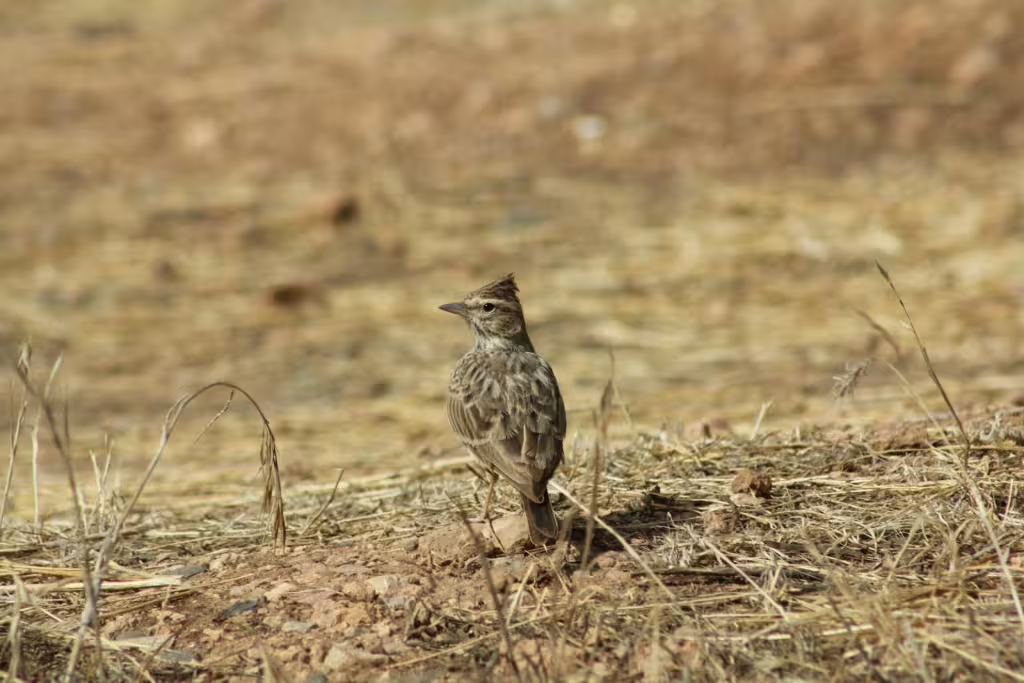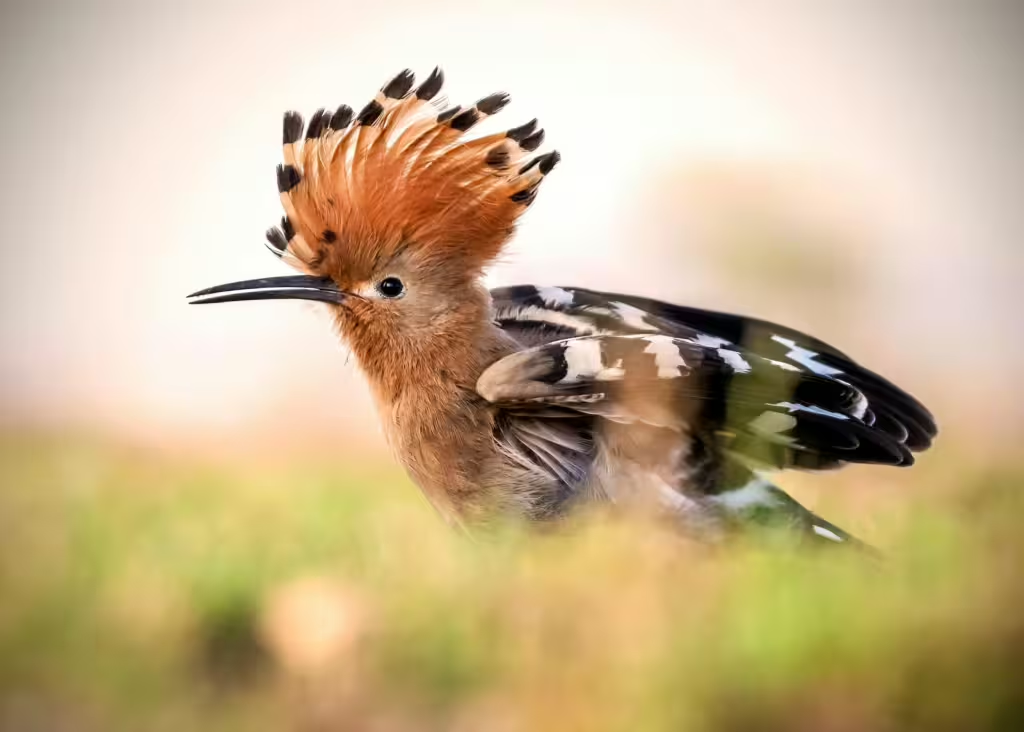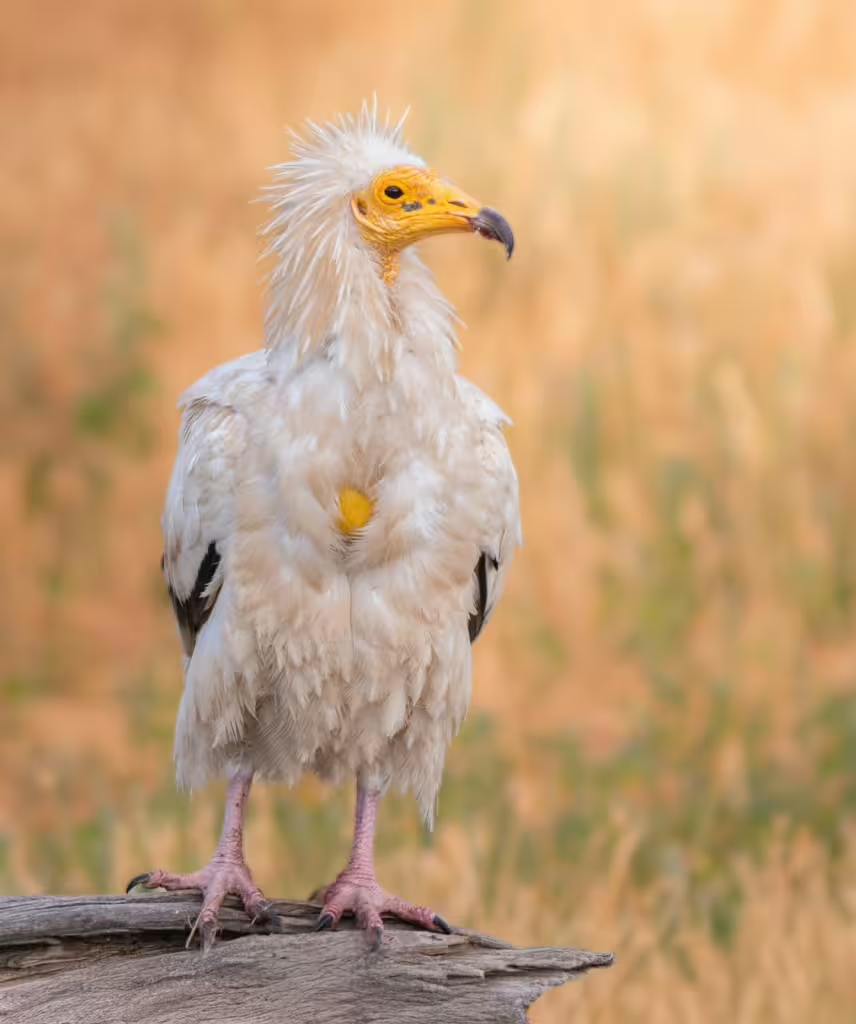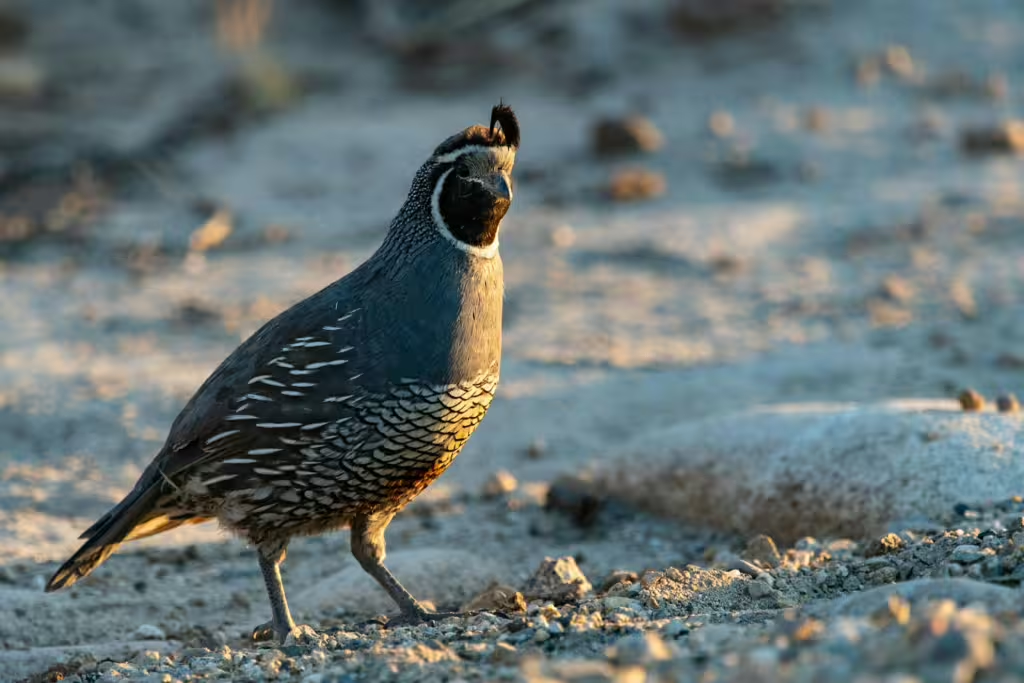Imagine, for a moment, that you are standing upon a great sand dune, looking out onto a wide expanse of bleak and endless landscape. The desert you have found yourself in at present is like many that cover the surface of the Earth, and though some unusual plants and rocky outcrops pockmark the mostly barren environment, it does not appear as though there us any other living creature in sight. That is, until you look up to see the circle of buzzards alighting a few hundred feet above your head.
In this scenario, the focus might seem like it is on the helplessness of the situation, but in fact, the real purpose of this fairly dramatic introduction is to bring the patient, feathered scavengers to the reader’s attention. Of course, vultures are not the only birds to be found in the desert, though they do set the scene quite nicely. Still, there is no denying that deserts themselves are some of the most extreme environments on the entire planet.
Characterized by scorching daytime temperatures, frigid nights, and scarce water resources, deserts are not a place that any sane human would want to find themselves for long, and yet so many animal and plant species make these places their home; some of them even do quite well there! Yes, despite these harsh conditions, deserts are home to a variety of wildlife, including, as clever readers might have already surmised, an impressive array of bird species.
In this article, we will take a look at the fascinating world of desert birds. We will discuss several species that have evolved remarkable adaptations which allow them to survive and even thrive in these harsh, arid landscapes. We will explore which survival strategies they employ when food and water are scarce, as well as their unique behavior patterns. Finally, we will explore the ecological importance of deserts birds and how, even in these unforgiving ecosystems, they matter.
The Challenges of Desert Life
Before delving into any specific bird species, it’s important that we understand what some of the more overt challenges desert creatures face when living in these harsh habitats:
Extreme Temperatures: Most people don’t know this but deserts can be just as cold as they are hot; even over the course of a single day. This is because, while deserts can reach temperatures above 122°F during the day, they can drop below freezing when the sun sets. These frigid nights can be just a dangerous to living things as the blistering heat of the day.
Why do deserts get so cool, you may ask? Well, the answer is kind of two-fold; hot then cold. The lack of humidity and the poor heat-retaining properties of sand mean that during the day, it heats up quickly under the sun. When night falls, the sand radiates the trapped heat into the clear, dry air, rapidly, allowing it to escape entirely.
Water Scarcity: Deserts are some of the driest environments on the planet. This means that rainfall is minimal, though not altogether impossible, but even standing water is rare enough to encounter.
Limited Food Sources: Less water means fewer plants and because plant life is sparse, food availability can fluctuate seasonally at places all over the food web.
Predation and Competition: As with most desert flora and fauna, birds must compete with other living things for food. They must also avoid predators in an environment with little cover and not a lot of extra energy to use in a prolonged chase.
To overcome these obstacles, desert birds have developed quite a few adaptations, including water-efficient metabolism, nocturnal or crepuscular activity, and highly specialized feeding habits.

Notable Birds of the Desert
Roadrunner (Geococcyx californianus)
Most of us only know about roadrunners thanks to Looney Tunes, but Wile E. Coyote never had to contend with a real roadrunner. Arguably the most famous desert bird, the Greater Roadrunner is actually a member of the cuckoo family. This bird is known for its speed and agility and can reach speeds of up to 20 mph at a clip. This allows the bird to chase down even the swiftest lizards, insects, and small snakes with ease; and yes, it also means it can outrun the odd coyote now and then.
It’s important to note that roadrunners obtain most of their water from their food, which greatly reduces their dependence on drinking water. Since water is so scarce, this means that they don’t have to waste time looking for it and can focus instead on the hunt. These speedy birds also possess a rare ability to tolerate high temperatures. Like dogs, they have the rare ability to regulate body heat by panting or by exposing bare skin patches; two singular behavioral elements that make them well-adapted to desert life.
Cactus Wren (Campylorhynchus brunneicapillus)
The Cactus Wren is the largest wren in North America. This “Bird the Builder” can be found in deserts across the southwestern United States and northern Mexico, where it constructs large, dome-shaped nests in cacti or thorny shrubs. The location of these armored birdhouses provide the cactus wren with protection from predators and the harsh, desert sun. Cactus wrens feeds on insects, spiders, and fruit, deriving moisture mostly from its diet and not from trying to find nearby water. Perhaps because they spend so much time and effort on their homes, or perhaps because desert life is so perilous, these birds are highly territorial. Whatever the reason for this cantankerous nature, they use their loud, chattering calls to communicate and ward off would-be predators.
Gila Woodpecker (Melanerpes uropygialis)
Another iconic desert bird, the Gila Woodpecker, is known for nesting in giant saguaro cacti. Like its deciduous-dwelling cousin, this bird excavates holes in the thick, water-storing cactus, creating a well-insulated and safe nesting cavity to raise its family. Like most desert critters, these birds are omnivorous, feeding on insects, fruit, and even small vertebrates with equal fervor. It’s important to note that the holes they create in cacti aren’t just for their benefit, they also provide shelter for other desert animals, making them key contributors to the desert ecosystem.
Burrowing Owl (Athene cunicularia)
Owls live in the desert too, you know. However, desert owls like the burrowing owl don’t really come out exclusively at night. This might seem odd in such a hot environment, but these owls have their own way of doing things. Burrowing owls are active during the day and nest underground in burrows, often taking over abandoned tunnels dug by prairie dogs or ground squirrels. They are typically found in arid regions of North and South America. Unlike flying owls, these birds have long legs that help them run swiftly across open terrain. They feed on insects, small mammals, and reptiles, adapting their diet based on whatever is available in a given season.
Sandgrouse (Pterocles spp.)
Sandgrouse are curious-looking animals that hail from arid regions of Africa, Asia, and the Middle East. Not on ly do they have a somewhat striking appearance, these birds have unique water-absorbing feathers on their bellies, which allow them to carry water back to their nests so that their semi-helpless chicks can take a drink. This adaptation enables the sandgrouse to live far from water sources while still ensuring that their young receive the hydration they need to grow to adulthood.
Lappet-faced Vulture (Torgos tracheliotos)
We couldn’t do this list without covering at least one vulture. The lappet-faced vulture is one of the largest desert scavengers in Africa. As it soars over the arid landscape in search of carrion, this raptor is actually helping to maintain its desert ecosystem in a very big way. Not only do vultures and other scavenger birds consume carcasses and prevent the spread of disease, they aid in nutrient cycling in an environment where vital nutrients are a rare commodity for every living thing. Its large wingspan and powerful beak allow it to dominate other scavengers at feeding sites, making it almost an apex predator of the desert biome.

Hoopoe (Upupa epops)
If you’ve never seen a hoopoe bird before now, we feel badly for you. Just look at that hairstyle! With its striking crest and distinctive call, the Hoopoe is a desert mainstay in places like Africa, Europe, and Asia. Hoopoes use their long, curved bill to probe the ground for insects and larvae. This bird’s ability to forage efficiently in arid environments makes it one of the most successful desert dweller across several different types of desert.
Desert Lark (Ammomanes deserti)
A true desert specialist, the Desert Lark blends perfectly with its sandy surroundings. Found in the Middle East and North Africa, this pallid bird has bland, cryptic plumage that provides it with excellent camouflage. Desert Larks are omnivorous and feed primarily on seeds and insects, foraging on the ground in search of food wherever they can find it.
Brown-necked Raven (Corvus ruficollis)
Like many members of the corvid family, this intelligent and adaptable bird thrives best in desert environments. An opportunistic feeder, the brown-necked raven can be found across North Africa and the Middle East, where it consumes carrion, insects, and plant matter. Its problem-solving skills and social behavior make it one of the most versatile desert birds, as well as one of the most intelligent within this particular ecosystem.
Adaptations for Desert Survival
Water Conservation
Desert birds minimize water loss and can survive a distinct lack of water through specialized adaptations: Many of these birds obtain moisture from food rather than drinking water, like the roadrunner or the cactus wren. At the same time, some desert birds excrete waste as uric acid instead of liquid urine, thus reducing water loss. Certain species, like the sandgrouse, have specialized physical attributes which enable them to transport water to their young.
Heat Regulation
To cope with extreme temperatures, desert birds employ several strategies including panting and gular fluttering. These behaviors help the birds cool down by rapidly moving their throat muscles to evaporate moisture. Other birds will simply stay out of the sun, seeking shade to rest in during the hottest parts of the day. Certain birds, like roadrunners, possess the ability to raise their feathers to allow airflow and dissipate heat.
Feeding Strategies
Desert birds have adapted their diets to maximize survival…mostly by eating just about anything they can find. This is why the vast majority of desert birds are opportunistic feeders, consuming a wide range of food. Quite a few desert birds are insectivorous, which helps them to control desert pest populations. Meanwhile, frugivorous birds rely on drought-resistant plants like succulents and cacti for sustenance and hydration.

The Role of Desert Birds in Ecosystems
Desert birds play several crucial roles in maintaining the balance of their unforgiving ecosystems. For one, some birds, like the Phainopepla, help to spread the seeds of desert plants that would have no other way to pollinate distant members of their species otherwise. As we mentioned earlier, those birds that dine on insects can help keep harmful ones in check. Finally, scavengers like vultures help to mitigate the spread of disease by consuming dead animals.
True Investigator Says…
As you can see, desert birds are the consummate survivors of the avian family. These remarkable birds are equipped with many unique physical and behavioral adaptations which enable them to endure some of the most challenging conditions on the entire planet. From the speedy roadrunner to the circling vulture, each species plays its own role in helping out its ecosystem.
Even as climate change and human activities continue to impact desert environments, these birds find ways to endure, but it may not be forever. Despite all that these birds are capable of, they are still used to certain patterns. The change in rain patterns, breeding seasons, and an increase in global temperature, are not easy things for any species to adapt to. In many ways, this means that it has become more important than ever that we work to protect these avian wonders by studying what we can do to help them. If we don’t, then these already tenuous ecosystems may fall apart, and who knows which nearby ecosystems will ultimately be affected.
Discover more from TrueInvestigator
Subscribe to get the latest posts sent to your email.


